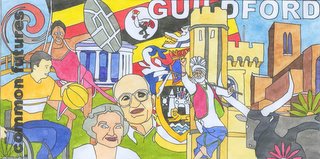How the Festival is created in Schools and in the community?
Artists and community workers employed by Asian Arts Access create the Festival in your school and the community. This is done by:
- Providing the background to ephemeral work and by offering an appreciation of cultural diversity and the environment
- Encouraging culturally diverse children and teachers to work at school with people from different backgrounds
- Encouraging community participation in the Festival and its schools programme
- Encouraging partnerships with local communities, arts organisations, schools and libraries
- Providing experienced artists and practitioners to work with children, teachers and parents
- Creating access to research materials on the Festival website
- Showing films, drawings and pictures of successfully developed arts
- Encouraging children, teachers and parents to use library books, electronic media, websites and dedicated materials provided by Asian Arts Access
Practical sessions for children at school and at home
- Participation in a wide range of ephemeral work, all created from natural materials and inspired by the cultural backgrounds of the artists, teachers and children
- Working with expert community artists and guides to create ephemeral arts using a variety of traditional and modern techniques
- Working with parents and community visitors to create various forms of outputs – mask making and painting, kite making, designing floor-based pasterns, origination of murals and development, face painting for traditional dancers, making of gifts.
- Viewing dedicated films, TV programmes, films showing ephemeral arts in their story
- Using the exhibition developed by Asian Arts Access to carry out course work
- Taking pictures of artists at work to develop own project proposals and ideas
- Exercises to connect the A Festival of Ephemeral Arts to folklore, modern day celebrations and experimentation.
Who would benefit?
- School classes from different disciplines – art, sociology, geography, history and liberal studies
- School children working on their own for important school projects, self study and group work
- Teachers by seeing how expert artists create materials and use them to complete new works
- Parents, teachers and communities who would benefit by interacting through the Festival. It brings the “school into the community” and “ the community into the school”.
Resources and presentation
- Over one or two days, students, teachers and parents participate in and view a wide range of ephemeral artforms.
- Community artists guide students and other participants in creating these arts by using a variety of techniques and materials.
- A dedicated Festival creates opportunities to celebrate folklore, discuss cultural events and understand issues relating to identity.
